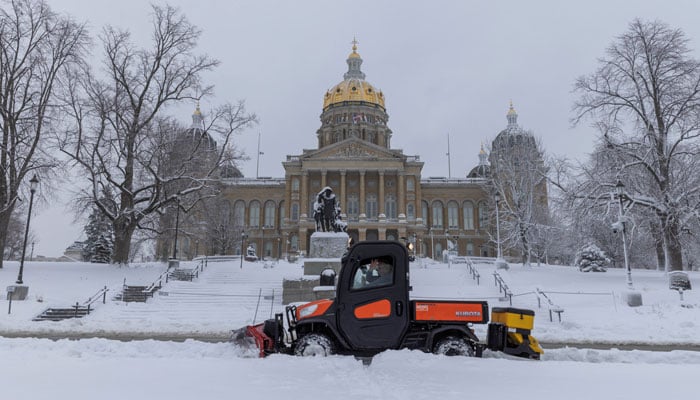A powerful storm from the Arctic unleashes record-low temperatures and dangerous wind chills over a large portion of the US, along with snow and freezing rain from the south to the northeast.
The most recent advancements are as follows:
temperatures so frigid they broke records
Nearly 80% of the US is expected to see below-freezing temperatures this coming week, according to CNN, with many daily cold records already broken in Texas, Oklahoma, and Kansas.
On Tuesday, further records could fall across the central and southern United States; towns such as Memphis, Dallas, and Nashville expect to remain below freezing for a minimum of seventy-two hours.
Frostbite danger in a matter of minutes
Wind chill advisories are in effect for more than 120 million people between the Canadian and Mexican borders. In the Central Plains and Middle Mississippi Valley, life-threatening sub-zero wind chills can drop below -30 degrees, greatly increasing the risk of frostbite within minutes and subsequent hypothermia.
several fatalities in various states
Due to consecutive winter storms that unleashed dangerous wind, ice, and snow, at least five deaths have been reported in Arkansas, Oregon, Mississippi, and Tennessee since January 12. Traffic accidents, such as the fatal one in Arkansas, serve as a reminder of the challenging circumstances.
hazardous conditions for travel
As snowfall covers New York and New England and moves northward, the National Weather Service issues advisories about hazardous travel conditions and slick roads. There have already been hundreds of reported mishaps due to hazardous driving conditions in the South.
Closures of schools
Temperatures too low cause school districts in Alabama, Louisiana, Mississippi, Texas, and West Virginia to close, hurting staff and pupils.
With over 80 million people in a wide area under winter weather alerts due to the ongoing Arctic conditions, snow and freezing rain from the south are moving into the mid-Atlantic and Northeast through Tuesday.
There will likely be significant lake-effect snowfall downwind of the Great Lakes, which may impede travel. Cities such as Buffalo, New York, and Watertown anticipate heavy snowfall, while long-absentee snowfall returns to New York City, Washington, DC, and Philadelphia.







